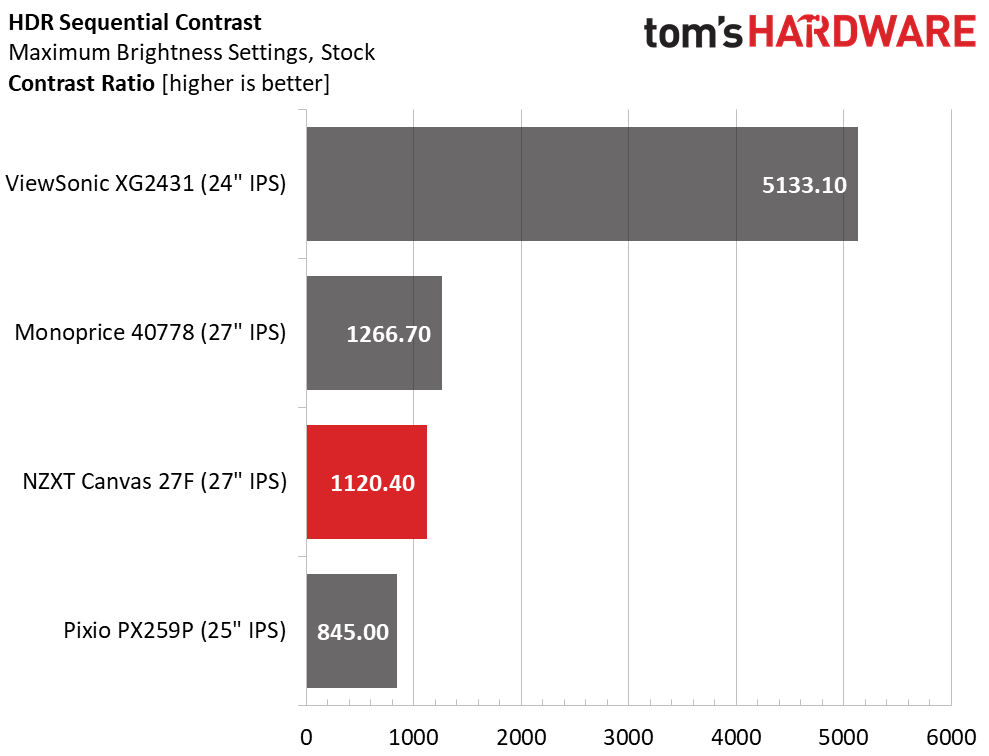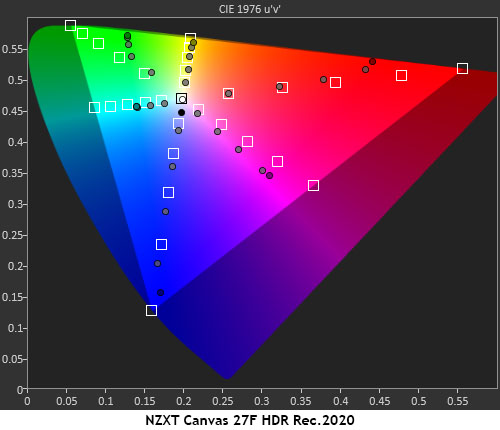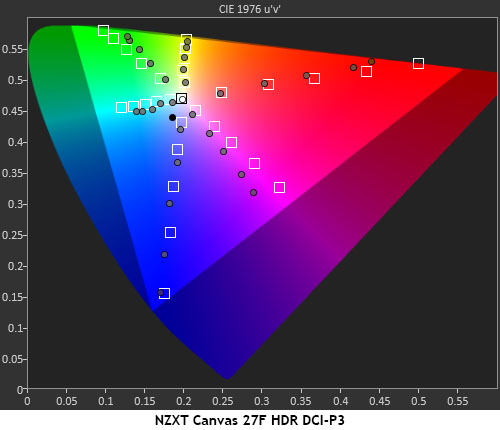Why you can trust Tom's Hardware
Our HDR benchmarking uses Portrait Displays’ Calman software. To learn about our HDR testing, see our breakdown of how we test PC monitors.
The Canvas 27F supports HDR10 signals seamlessly by switching modes automatically. All image modes and controls are still available, so it’s possible to calibrate HDR independently. That’s something very few monitors can do. Luckily, no fiddling is needed because it delivers great performance right out of the box.
HDR Brightness and Contrast



The Canvas 27F is a DisplayHDR 400 certified monitor, and it has no trouble exceeding that figure with over 478 nits peak brightness. Unfortunately, there is no zone or field dimming, so actual contrast is the same as SDR, 1,120.4:1. ViewSonic is the only one to offer a dynamic option and you can see that it bumps contrast to over 5,000:1. The end result is that the Canvas 27F’s HDR doesn’t look significantly different than its SDR presentation.
Grayscale, EOTF and Color



The Canvas doesn’t have extra HDR contrast, but it does have the same high degree of accuracy as its SDR results. Grayscale tracking is visually flawless, with all errors under 3dE. The EOTF tracks close to the reference line with a rise at zero percent (too light) and an early arrival at the tone-map transition point. In practice, this means blacks that are more gray and occasionally muted mid-tones. It is possible to mask these issues by adjusting the contrast slider upwards. That will offer a little more depth, but some highlight detail will be harder to see.
Even though the Canvas 27F is an sRGB monitor, it tracks the larger color gamut in HDR mode up to around 80%. It also makes a good run at Rec.2020 by hitting the targets up to almost 70% saturation. This is good engineering on NZXT’s part that maximizes the display's capabilities. Aside from a slight hue error in magenta, this is a superb chart for a monitor that costs less than $300.
MORE: Best Gaming Monitors
MORE: How We Test PC Monitors
Get Tom's Hardware's best news and in-depth reviews, straight to your inbox.
MORE: How to Buy a PC Monitor: A 2022 Guide
MORE: How to Choose the Best HDR Monitor

Christian Eberle is a Contributing Editor for Tom's Hardware US. He's a veteran reviewer of A/V equipment, specializing in monitors. Christian began his obsession with tech when he built his first PC in 1991, a 286 running DOS 3.0 at a blazing 12MHz. In 2006, he undertook training from the Imaging Science Foundation in video calibration and testing and thus started a passion for precise imaging that persists to this day. He is also a professional musician with a degree from the New England Conservatory as a classical bassoonist which he used to good effect as a performer with the West Point Army Band from 1987 to 2013. He enjoys watching movies and listening to high-end audio in his custom-built home theater and can be seen riding trails near his home on a race-ready ICE VTX recumbent trike. Christian enjoys the endless summer in Florida where he lives with his wife and Chihuahua and plays with orchestras around the state.